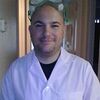BME100 f2013:W900 Group8 L6
| Home People Lab Write-Up 1 | Lab Write-Up 2 | Lab Write-Up 3 Lab Write-Up 4 | Lab Write-Up 5 | Lab Write-Up 6 Course Logistics For Instructors Photos Wiki Editing Help | |
OUR COMPANY
LAB 6 WRITE-UPComputer-Aided DesignTinkerCAD TinkerCAD is an opensource online educational website and tool one can use to create 3 dimensional representations of ones's ideas or modifications. Any 3D image one makes in TinkerCAD can be submitted to the opensource community or downloaded for one's own use. We used TinkerCAD to make a 3D representation of a modification we wished to make to a common PCR tube as shown below.
Implications of Using TinkerCAD for Design Among the multitude of ways one could use TinkerCAD, one could use TinkerCAD to design or modify consumables, like tubes for example, with specific parameters one needs. Once one has designed the proper consumable, it can be exported to a 3D printer for production. Using this method, one could have tailor made consumables on demand, rather than relying on postal delivery.
Feature 1: Cancer SNP-Specific PrimersBackground on the cancer-associated mutation In order to detect cancer associated sequences, some background information must be known. One must know about DNA, nucleotides and polymorphisms. Deoxyribonucleic acid (DNA) is known as a polymer which is composed of nucleotides. A nucleotide makes up DNA and RNA, which is then used for incellular signalling and enzymatic reactions. Nucleotides are the building blocks of DNA. Polymorphism is a DNA sequence variation that is common in the population. Knowing this background information, one is able to search and look into rs17879961. This variation is one that is found in homosapiens holding a clinical significance of being pathogenic. Looking for this specific variation, one would see that this SNP is located on the 22nd chromosome, which is typically out of 23 pairs for humans. Looking further into rs17879961, an affected gene called CHEK2 is apparent. This cancer related function of CHEK2 is used in response to DNA damage and replication process. When this is activated, entry to mitosis is prevented and mutations to this gene are a predisposition to sarcomas, breast cancer, and brain tumors.
Feature 2: Consumables KitIn our kit would be everything that is needed to do the lab successfully. It would include PCR tubes, the PCR container and holders for the tubes, as well as the micropipettor and tips for it. It will also have the primers, PCR mix and sample DNA and each will be clearly labeled. Because students are not extremely exercised in using a micropipetor a instruction manual would be included as well as extra tips, empty PCR tubes, and blank solutions for the micropipettor to allow the user to gain practice with micropipetting techniques before they actually run the test on real DNA. Lastly there will be foil included in the kit. The virtual comment board addressed the problem that the SYBR-green had the problem of bleaching because of its interaction with light. To prevent bleaching the tubes should be wrapped in the foil included to prevent bleaching of the SYBR-green. Another problem that the comment board showed was that their was difficulty labeling the tubes. Labels would be included that has an adhesive side and could be easily written on to make the process of identifying and labeling tubes much easier. These changes to the consumables kit would make the overall experimenting process easier and less of a hassle to the person performing them.
Feature 3: PCR Machine HardwareThe PCR Machine is used to replicate a strand of DNA billions of times. This is done by mixing the DNA with primer, nucleotides, and polymerase to create a polymerase chain reaction (PCR). The machine heats up and cools down constantly, allowing for each stage to be completed at the proper temperature. This device is open source and will need to be assembled once the pieces are taken out of the box. Everything for this will be placed separately in their own box to allow the customer to understand that this is one part of the diagnostic system. The wooden pieces will be stacked and placed on the bottom, wrapped in bubble wrap for protection. The screws and smaller items will be in small bags. The pieces that belong inside the system will be placed in bubble wrap as well, separately to keep them safe. There will be a detailed instruction kit on how to put the machine together and how to troubleshoot. A copy of the software will be included in the packaging but is also available for download on the internet. There will also be instructions in the box on how to use the machine and what each setting means.
Feature 4: Fluorimeter HardwareThe fluorimeter is included in the system to allow the DNA replicated from the PCR machine to be analyzed. A fluorimeter detects fluorescence which is relative to the fluorescent material in the drop. It is also proportional to the amount of molecules being detected. A fluorescent dye will be included with the machine to add to the DNA in order to detect a gene. The fluorimeter will be packaged separately, and stored in a styrofoam outline to keep the machine safe from being damaged in the box. The phone case will also be protected by styrofoam. The fluorimeter will come already assembled, but the phone holder will need to be assembled. A set of instructions will be placed in the box on how to use the fluorimeter and how to set up the entire experiment. Instructions for assembling the phone holder will also be included. These will be in a separate box within the kit to let the reader know that this is one piece of the diagnostic system. This redesign deals with the major weakness of the phone holder used to prop the phone up in order to take pictures of the substance in the fluorimeter. Though the device had enough room to hold the phone, it was difficult to get the phone the same height as the fluorimeter. This redesign allows for the reader to adjust the height of the phone adequately without having to stack objects underneath it. Though stacking objects can be effective, it causes the holder to become unstable. Even if the holder is stacked on a couple flat surfaces, the phone still has a greater chance of tipping over, which could ruin the entire experiment. This holder allows for the user to adjust the height without the use of other objects, causing the phone to be more stable and allowing for less accident in the experiment. Another advantage would be that it allows for easy set up, without having to find the right sized object to put under the holder. This allows for an easy adjustment because the nuts hold the phone holder in place while still allowing for the easy adjustment of the phone holder. This redesign permits the use of a cell phone camera, making the fluorimeter process much quicker.
Bonus Opportunity: What Bayesian Stats Imply About The BME100 Diagnostic ApproachIn calculation 3, the probability that a patient will have cancer given a positive PCR value was calculated. This value was relatively low due to the result table. Some patients were detected without cancer as the final result but received a positive PCR value for cancer. This shows that the prediction of cancer is not quite as sensitive as desired. In calculation 4, the probability that a patient will not have cancer given a negative PCR value. This value was extremely high because of the result table. Most patients that did not have cancer were given a negative PCR reaction value. This shows that the prediction of cancer was highly specific. |
|








